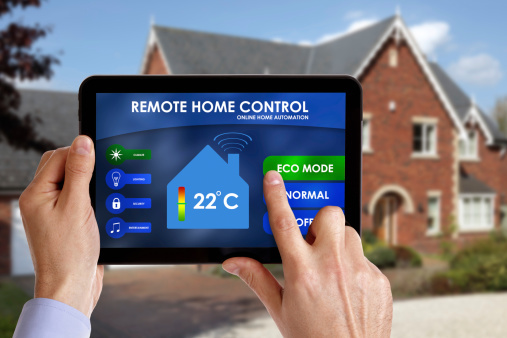Big Data And The Internet Of Things


Picture, if you will, your coffee machine keeping track of the number of times a day it’s being used, then sending that information along to businesses that specialize in selling coffee. Or imagine your home’s thermostat relaying temperature information to the utility company in order for the latter to compile customer usage data.
So, is this science fiction, or perhaps a spicy food-induced Orwellian nightmare scenario? No, it’s all well within the realms of possibility, if not already a reality. We’ve gotten to the point where we can have everyday items, all sorts of things, accessing the Internet to transmit lots of data, big amounts of data if you will. It’s a reality that, according to the article “The Internet of Things: Big Data is About to Get Bigger” means trillions of dollars’ worth of business opportunities. But what does this all mean?
Big Data is the massive amount of data, gathered from a broad selection of sources, both traditional and cutting-edge, and presented with an amazing degree of speed and availability. It’s an avalanche of information that businesses can use in order to spot trends, track customer spending, and help shape future business and marketing plans.
The Internet of Things, called IoT for short, is the concept where everyday items, people, vehicles, you name it, each have a means of accessing the Internet without direct human intervention or operation. The IoT also enhances and expands human intervention, because it allows you to control gadgets such as your house lights via your tablet or smart phone.
As long as the thing in question has web access and can hold an IP address, it’s all good. Does your cat have a microchip embedded for easy tracking? Congratulations, your cat is a thing. Does your smart phone have a GPS function? It’s a thing.
Big Data has been compared in the past to the idea of drinking from a firehose: a massive, unrelenting rush of information that has the capacity to overwhelm unless the flow can be controlled and focused. Until the Internet of Things came along, Big Data relied on web analytics, surveys, questionnaires, search engine results, social media interactions, and various facts and figures culled from a number of sources in the private and governmental sectors. This already constitutes a massive amount of data.
Now, let’s add the Internet of Things to the mix. According to the article referenced earlier, an estimate from Cisco estimates the number of interconnected devices somewhere between 50 and 100 billion “things”. That’s right: billion!
That’s some firehose!
Companies that rely on Big Data to help gauge where their sales and marketing efforts should be directed are going to be positively drowning in information. If they don’t already rely on tools like Hadoop or contract a third party to help them process the data into useable bits, they will certainly need to do so once the whole IoT concept really ramps up.
But if a business can sift through this data and focus on the parts that matter the most, it’s quite possible that they could become even more efficient (read: able to save money!), while increasing customer satisfaction by having a better idea of what their customers need and when they need it.
For instance, a heating oil company usually makes monthly deliveries based on a schedule. But if the winter is particularly cold, perhaps the furnace or the thermostat, either of them filling the role of a “thing”, transmits data indicating heavier than normal fuel usage, thus necessitating an earlier delivery. The customer doesn’t have to worry about keeping track of the tank level, and calling the oil company.
Whether it’s used for tracking down Fluffy when she got out, or a vending machine company knowing immediately when a machine is empty, the Internet of Things appears to have arrived, and will add reams of information to the already huge monster called Big Data. Check out the article “Is This The Year Of The Internet Of Things?” for more information on the shape of things to come.
